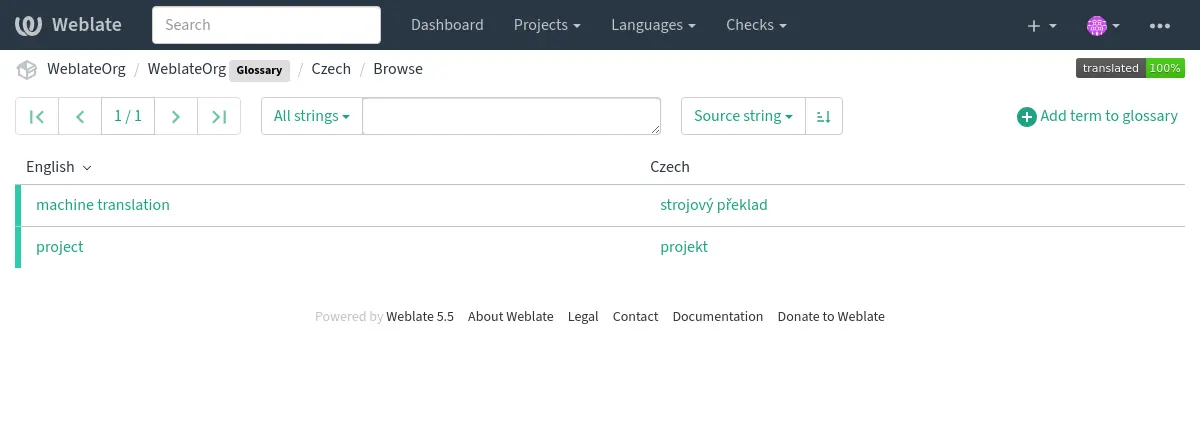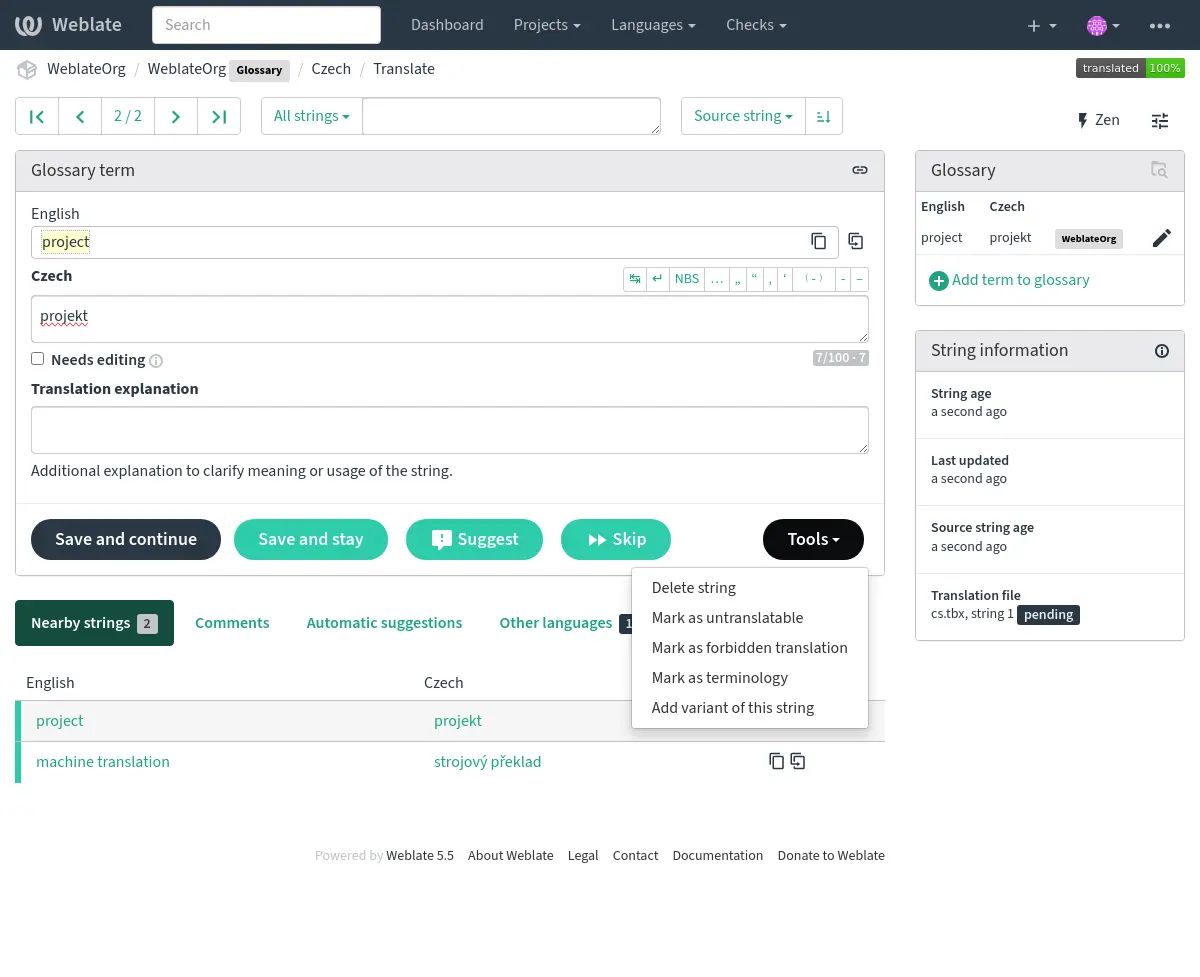Glosario¶
Each project can include one or more glossaries as a shorthand for storing terminology. Glossary easify maintaining consistency of the translation.
A glossary for each language can be managed on its own, but they are stored together as a single component which helps project admins and multilingual translators to maintain some cross-language consistency as well. Terms from the glossary containing words from the currently translated string are displayed in the sidebar of the translation editor.
Consejo
The glossary terms are not used in quality checks unless you enable that, see No se ajusta al glosario for more information.
Gestionar glosarios¶
Distinto en la versión 4.5: Glossaries are now regular translation components and you can use all Weblate features on them — commenting, storing in a remote repository, or adding explanations.
Use any component as a glossary by turning on Utilizar como glosario. You can create multiple glossaries for one project.
An empty glossary for a given project is automatically created with the project. Glossaries are shared among all components of the same project, and optionally with other projects using Compartir en proyectos from the respective glossary component.
The glossary component looks like any other component in Weblate with added colored label:

Puede explorar todos los términos del glosario:

or edit them as any translations.
Términos en glosario¶
Glossary terms are translated the same way regular strings are. You can toggle additional features using the Tools menu for each term.

Untranslatable terms¶
Added in version 4.5.
Flagging certain glossary term translations read-only by bulk-editing, typing in the flag, or
by using Tools ↓ Mark as untranslatable means they can not
be translated. Use this for brand names or other terms that should not be changed in other languages.
Such terms are visually highlighted in the glossary sidebar.
Traducciones prohibidas¶
Added in version 4.5.
Flagging certain glossary term translations as forbidden, by bulk-editing,
typing in the flag, or by using Tools ↓ Mark as forbidden translation
means they are not to be used. Use this to clarify translation when some words are
ambiguous or could have unexpected meanings.
Terminología¶
Added in version 4.5.
Flagging certain glossary terms as terminology by bulk-editing, typing in the flag,
or by using Tools ↓ Mark as terminology adds entries for them
to all languages in the glossary. Use this for important terms that should
be well thought out, and retain a consistent meaning across all languages.
Variantes¶
Las variantes son una forma genérica de agrupar varias cadenas. Todas las variantes de un término aparecerán en el cuadro lateral del glosario mientras traduce.
Consejo
Puede emplearlas para añadir versiones abreviadas de un término.
Ver también
Glossaries in automatic suggestion¶
Added in version 5.3.
Following automatic suggestion services utilize glossaries during the translation:
The glossary is processed before exposed to the service:
Duplicate source entries are not allowed, any additional entries with the same source are skipped.
Any control characters and leading and trailing whitespace are stripped.
Traducciones prohibidas are skipped.
Nota
Many services store glossaries server-side and enforce limit on the number of saved glossaries. Weblate always deletes the oldest glossary if it runs out of space.